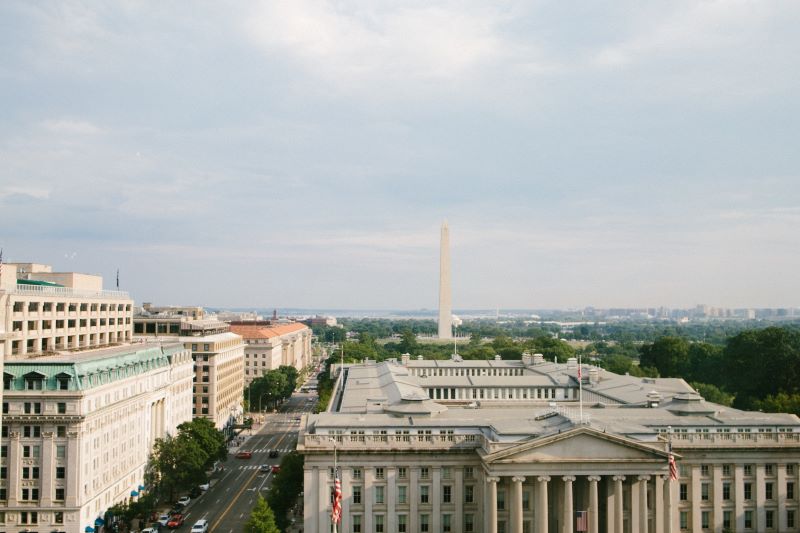Where is your summertime picnic on the grass most likely to trigger a stuffy nose and itchy eyes?
To mark Allergy and Asthma Awareness Month this May, Lawn Love ranked 2024’s Worst Cities for Grass Allergies This Summer.
We compared nearly 380 of the biggest U.S. cities based on allergy risk, exacerbators, and access to detection and treatment resources. More specifically, we looked at grass pollen forecasts, allergen intensity, and lawn mowing frequency, among 8 total metrics.
Get ahead of a congested allergy season with our ranking below. To learn how we ranked the cities, see our methodology.
- Metro area rankings
- Top 5 close up
- Key insights
- Expert take
- Behind the ranking
- Climate change: Nothing to sneeze at
City rankings
See how each city fared in our ranking:
Top 5 close up
Check out the slideshow below for highlights on our 5 worst cities for summertime grass allergies.
Key Insights
Stock up on allergy medication if you live in the nation’s capital — Washington (No. 1) tied with Lancaster, Pennsylvania (No. 8), for the highest presence of significant grass allergens in our ranking.
7 Illinois cities claim the most turf allergens overall — with high levels of mild, moderate, and significant allergens — followed by Philadelphia (No. 5), 6 Connecticut cities, and Washington. Thankfully, Chicago (No. 39) boasts the 2nd-best access to allergy care after New York (No. 311).
Suburbs like Sandy Springs, Georgia (No. 370) and Paradise, Nevada (No. 377) have the worst access to allergy care, with no local allergists or immunologists to administer allergy tests and treatment. Luckily, their forecasts call for low levels of grass pollen this summer.
Turf allergy risk is lowest in some parts of Florida and Minnesota, with Fort Myers, Florida, finishing in last place. These 2 states have low grass pollen forecasts and less severe lawn allergens.
Expert take
Allergies have been around for centuries, yet there are still plenty of misconceptions surrounding hay fever.
We asked experts to weigh in on seasonal grass allergies and offer advice on how to deal with the irritating symptoms.
- What are the top three ways to alleviate allergy symptoms from grass pollen?
- What kinds of grasses are the most troublesome during allergy season? What are the most allergy-friendly grass types?
- What is one common misconception about seasonal grass allergies?
- How can you tell the difference between seasonal allergies and a cold?
- How can a person tell if they’re allergic to grass pollen versus other types of pollen?
- When does grass allergy season typically begin and end?
Ask The Experts
Behind the ranking
First, we determined the factors (metrics) that are most relevant to rank the Worst Cities for Grass Allergies This Summer. We then assigned a weight to each factor based on its importance and grouped those factors into 3 categories: Allergy Risk, Allergen Severity, and Lack of Access to Allergy Care. The categories, factors, and their weights are listed in the table below.
For each of the 378 biggest U.S. cities, we then gathered data on each factor from the sources listed below the table.
Finally, we calculated scores (out of 100 points) for each city to determine its rank in each factor, each category, and overall. A city’s Overall Score is the average of its scores across all factors and categories. The highest Overall Score ranked “Highest Risk” (No. 1) for grass allergies and the lowest “Lowest Risk” (No. 378) for grass allergies.
Notes:
- The “Lowest Risk” among individual factors may not be No. 378 due to ties.
- “Historical Average Monthly Mows per Home” is based on internal customer data and covers the period of May and August 2022.
Sources
American Academy of Allergy, Asthma & Immunology, Lawn Love, National Oceanic and Atmospheric Administration, and Pollen.com
Climate change: Nothing to sneeze at
Allergies are getting worse.
Climate change is lengthening our allergy season by an average of 20 days and making allergens more intense. This is bad news for the more than 30% of Americans who sniffle, sneeze, and suffer from seasonal allergies.
Man’s best friend isn’t exempt from allergy season, either. Dogs can experience allergies from weeds and exposure to grass types like ryegrass, bermudagrass, fescue, and alfalfa.
There are some ways to minimize your exposure to grass pollen and resulting allergy symptoms, though — and they’re right in your own backyard:
- Design an allergy-friendly landscape.
- Plant low-pollen trees and flowers.
- Avoid working outdoors in the morning, when pollen counts are highest.
- Keep an eye on your local pollen count before heading outside.
- Check the wind speed in your area — wind transmits a lot of pollen.
- Switch to artificial grass.
- Discover which grass allergens are most likely to affect your area this summer.
Grass already getting to you? Avoid grass pollen altogether by hiring a local Lawn Love pro to mow your lawn.
Media resources
Quotes from Lawn Love Editor-in-Chief Sharon Sullivan
- Corpus Christi, Texas (No. 125), has the highest average forecasted grass pollen index for this summer, followed by Richmond, Virginia (No. 245).
- Neighboring Ohio cities Canton (No. 82) and Massillon (No. 82) tied for the most monthly mows per home, followed by Dayton (No. 187) and its suburb Kettering (No. 326).
- 19 California cities such as San Francisco (No. 55) and Berkeley (No. 92) tied for the highest average historical wind speed during the summer months, over 13 mph, followed by Wichita, Kansas (No. 16)
- Philadelphia (No. 5) tied with Connecticut cities Milford (No. 9) and New Haven (No. 9) for the highest presence of moderate grass allergens.
- Boston (No. 371), Rochester, New York (No. 329), and Lexington, Kentucky (No. 320), tied among 32 other cities with the no grass allergens with tests available.
Main photo credit: New Africa | Adobe Stock | Adobe License








